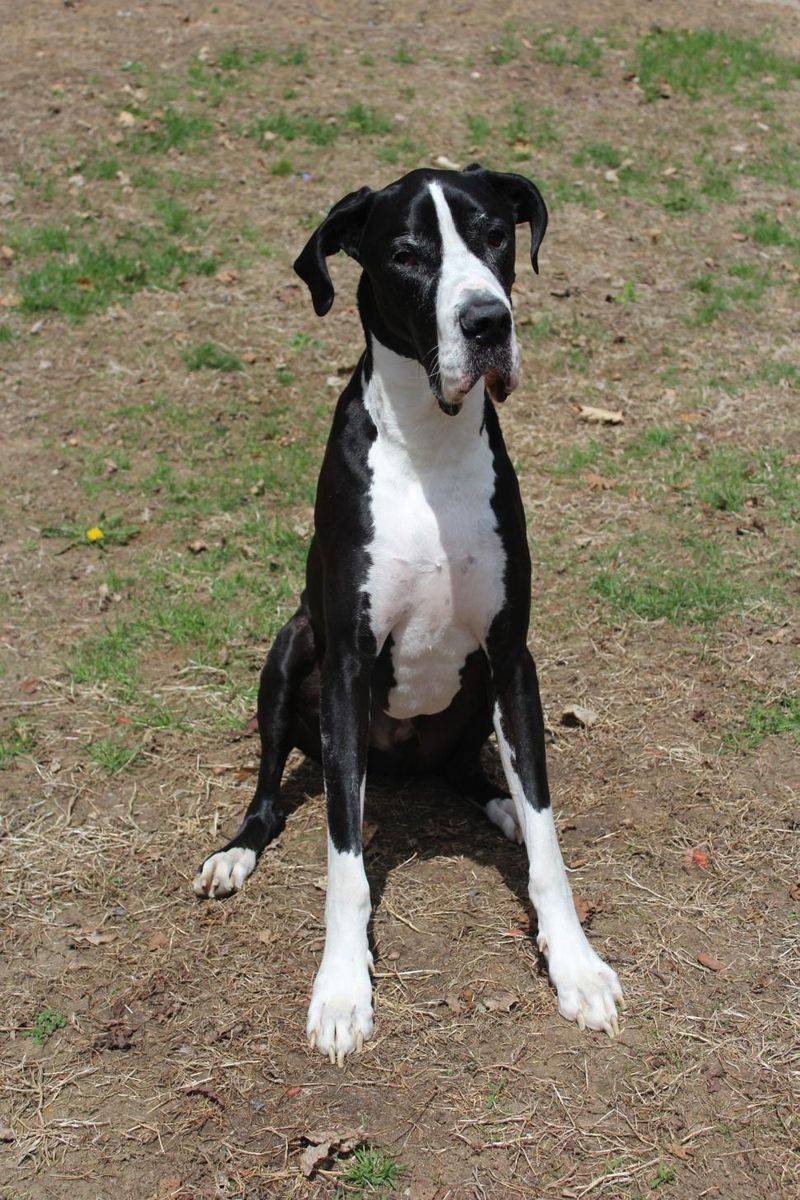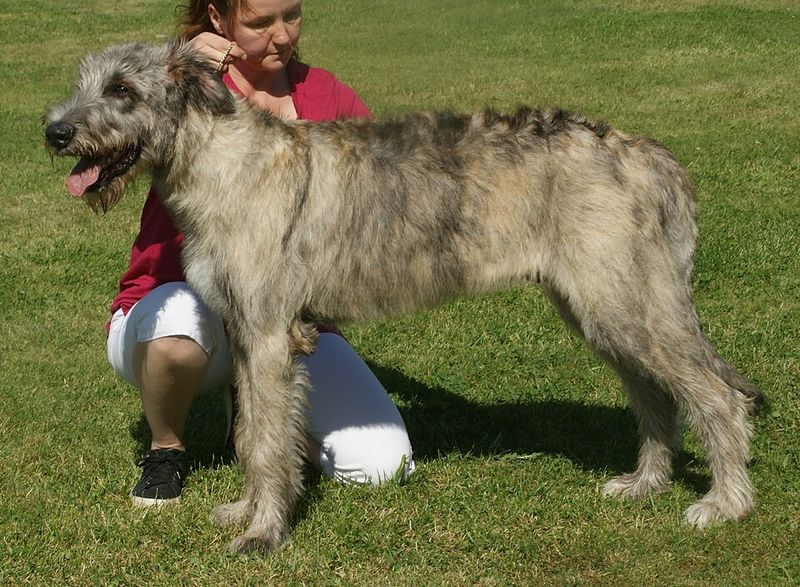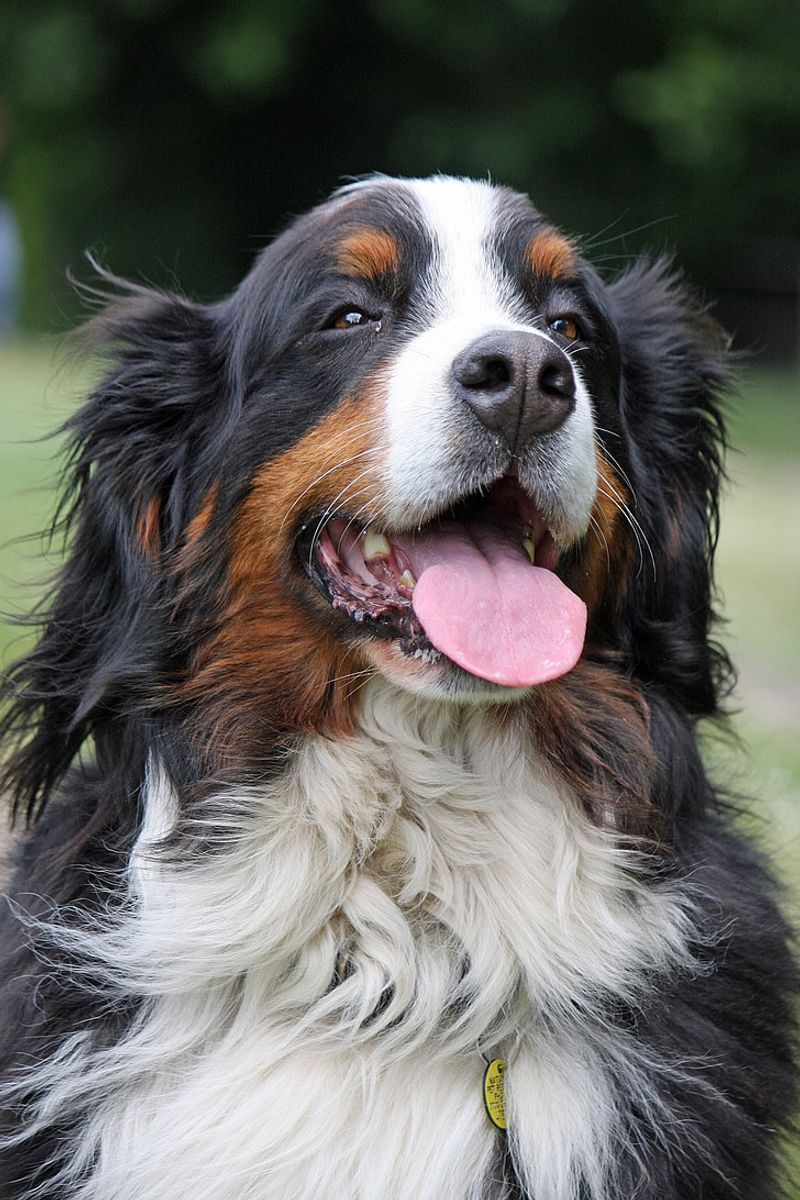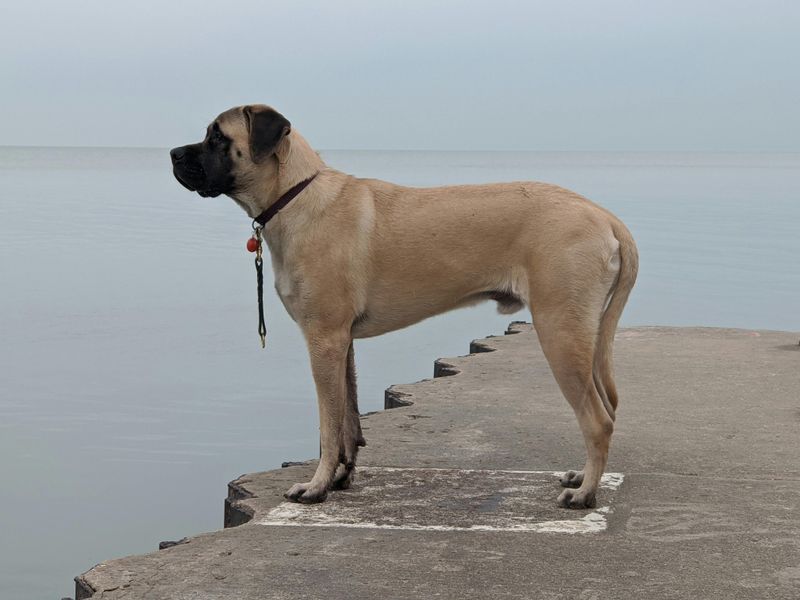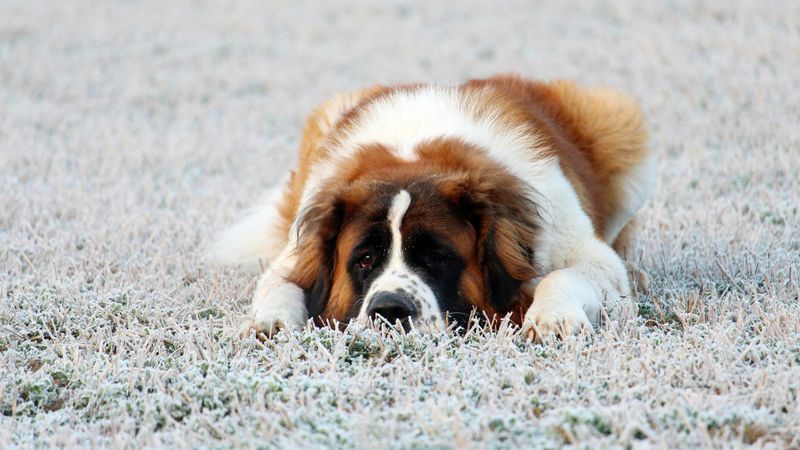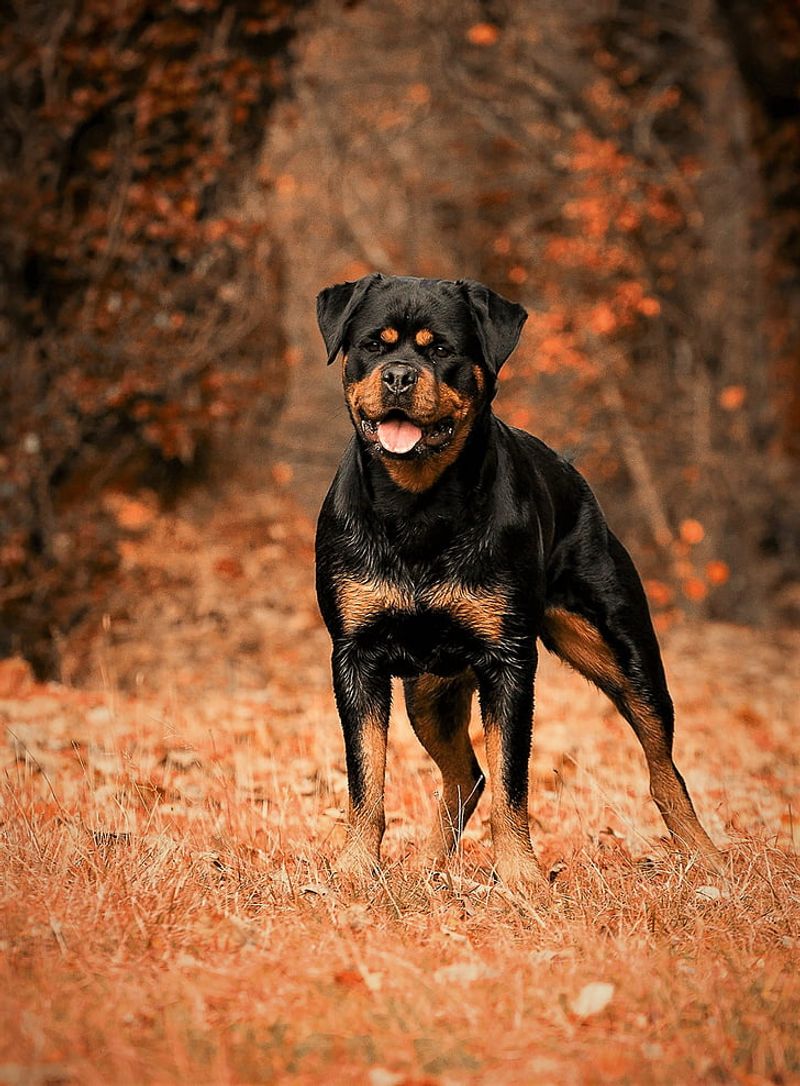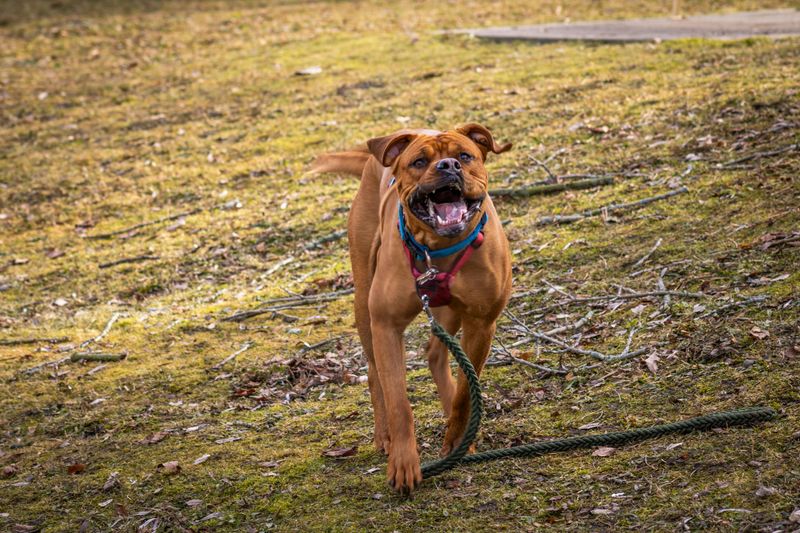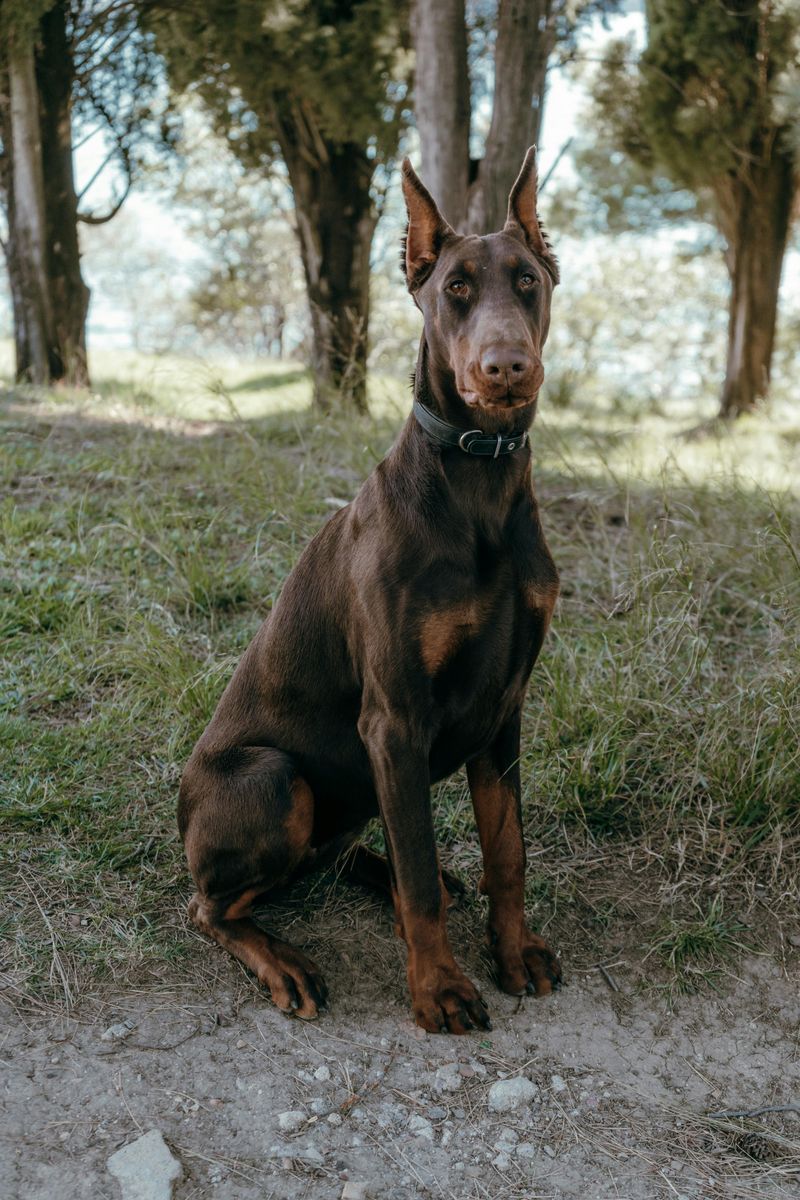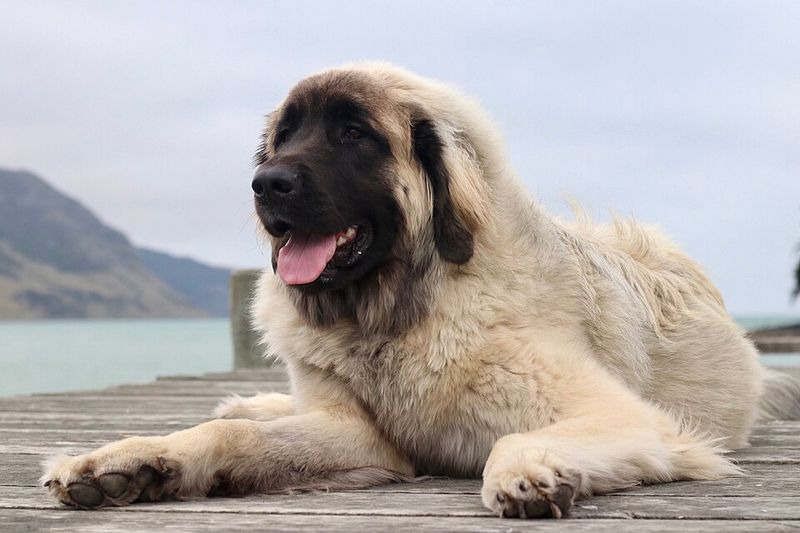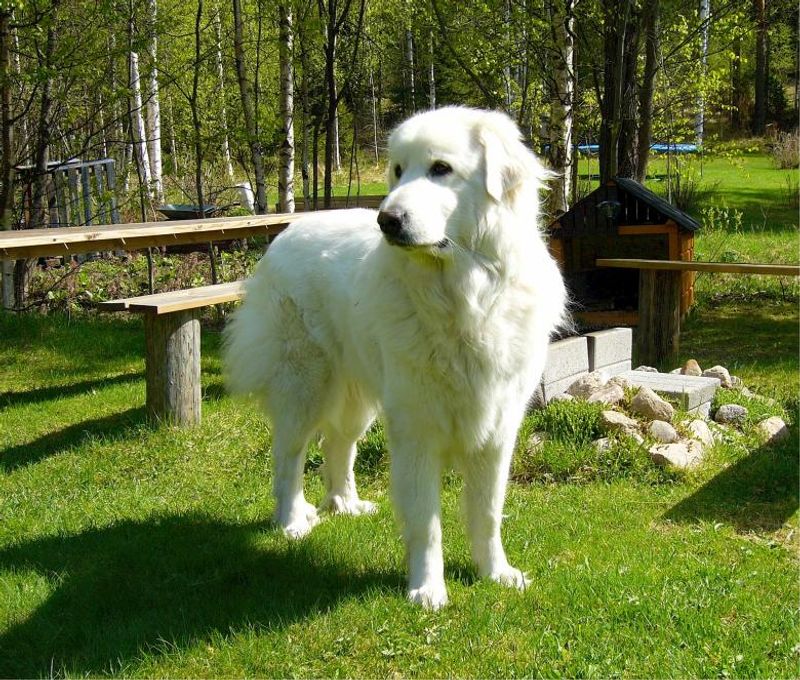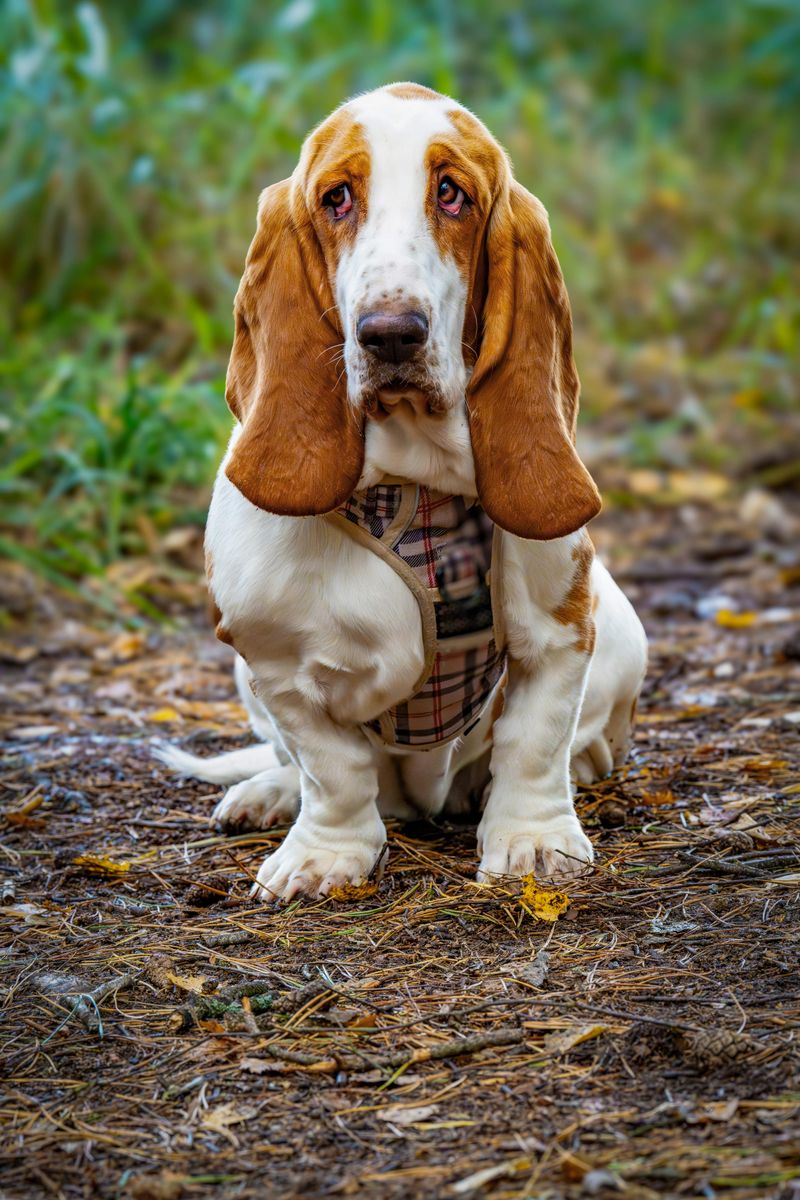Some dog breeds experience shorter lifespans due to various genetic, health, and physiological factors. While their time with us might be brief, these breeds bring immense joy and love. Understanding why their lifespan varies can help in providing them with the best care possible.
Great Dane (6–8 years)
Majestic in stature, the Great Dane is often referred to as the “gentle giant” of the dog world. With their towering height, they are both awe-inspiring and gentle companions.
However, beneath their imposing appearance lies a predisposition to various health issues. Heart diseases, particularly dilated cardiomyopathy, significantly impact their lifespan.
Despite their shorter time with us, Great Danes offer boundless affection and loyalty. Their playful nature and deep bonds with families make every moment cherished. Fun fact: Great Danes were originally bred for hunting in Germany, showcasing both power and grace.
Irish Wolfhound (6–8 years)
With a lineage tracing back to ancient Ireland, the Irish Wolfhound embodies a rich history and noble presence. Their impressive size and gentle demeanor make them beloved companions.
Sadly, their large size contributes to joint issues and heart conditions. These factors, combined with rapid growth, limit their lifespan.
Despite this, they are renowned for their affectionate and patient nature. The Irish Wolfhound’s loyalty and courage are legendary, echoing tales of ancient warriors and hunters. They are a reminder of the beauty and fragility of life.
Bernese Mountain Dog (7–9 years)
The Bernese Mountain Dog, with its striking tri-colored coat, is a breed from the Swiss Alps, known for its hardworking spirit and gentle nature.
Their susceptibility to cancer, particularly histiocytic sarcoma, contributes to their shorter lifespan. Genetic predispositions add another layer of complexity to their health.
Yet, their cheerful disposition and love for families make them irreplaceable. Bernese Mountain Dogs are not just pets; they are cherished family members. Their history as farm dogs reflects their loyalty and strength.
Mastiff (6–10 years)
Steeped in history, the Mastiff’s imposing size and gentle temperament have made them guardians throughout centuries. Their protective instincts are unmatched.
However, their large body mass predisposes them to joint and heart problems, affecting their lifespan. These health challenges require diligent care.
Despite this, Mastiffs are known for their gentle giant persona, providing security and companionship. Their rich history is a testament to their unwavering loyalty and courage. Ancient tales often depict Mastiffs as formidable protectors of home and hearth.
Saint Bernard (8–10 years)
Known for their heroic Alpine rescues, Saint Bernards are gentle giants with a heart as vast as their history. Their ability to save lives is celebrated across generations.
Unfortunately, their massive size leads to hip dysplasia and heart issues, which shorten their lifespan. These health concerns are a heavy burden for such a noble breed.
Nonetheless, their affectionate nature and patience make them ideal companions for families. Saint Bernards’ legacy of bravery and compassion continues to inspire. They embody the spirit of resilience and kindness.
Newfoundland (8–10 years)
With a heart as big as its paws, the Newfoundland is every child’s gentle guardian. Their love for water is legendary, assisting in countless rescues.
Their size, while contributing to their strength, also leads to heart and joint issues. These health challenges affect their longevity.
Yet, the Newfoundland’s kind disposition and boundless loyalty make them treasured companions. Their history as working dogs in Newfoundland reflects their unwavering dedication. Known for their swimming prowess, Newfoundlands embody the spirit of adventure and courage.
Rottweiler (8–10 years)
Rottweilers, known for their strength and loyalty, are often misunderstood. Their protective nature is balanced by deep affection for their families.
Unfortunately, they are prone to hip dysplasia and certain cancers, which impact their lifespan. Responsible breeding and care are vital for their health.
Despite these challenges, Rottweilers remain steadfast companions. Their rich history as working dogs in Germany showcases their dedication and intelligence. They are more than protectors; they are lifelong friends with an unmatched devotion.
Boxer (9–10 years)
With boundless energy and a penchant for fun, Boxers are known for their playful antics. However, their vivacious spirit comes with a lifespan of 9 to 10 years.
Their susceptibility to heart conditions like cardiomyopathy often curtails their years. Vigilant health checks and a balanced diet can prolong their life.
Despite their shorter lifespan, Boxers offer an abundance of love and companionship. Their affectionate demeanor makes every moment shared precious.
Bullmastiff (8–10 years)
Bullmastiffs, with their protective nature, serve as devoted guardians. Living 8 to 10 years, they often face joint issues and hip dysplasia.
Their large size contributes to these health concerns, impacting their overall longevity. Regular exercise and weight management are crucial.
Despite their size, Bullmastiffs are gentle and loyal, making them cherished family members. Their watchful eyes and loving hearts leave a lasting legacy.
Doberman Pinscher (9–11 years)
Doberman Pinschers, known for their intelligence and agility, have a lifespan of 9 to 11 years. They are prone to heart conditions, particularly dilated cardiomyopathy.
Genetic factors play a significant role in their health challenges. Proactive veterinary care and regular check-ups can help manage these issues.
Their sharp mind and loyal nature make them exceptional companions, providing protection and love throughout their lives.
Scottish Deerhound (8–10 years)
The Scottish Deerhound, with its dignified presence, faces a lifespan of 8 to 10 years. Prone to bloat and heart disease, this breed requires attentive care.
Their sighthound nature contributes to these vulnerabilities. Providing a balanced diet and monitoring activity levels can mitigate risks.
Despite their health concerns, Scottish Deerhounds offer gentle companionship, characterized by a serene and noble demeanor.
Cane Corso (9–11 years)
With a history as a Roman protector, the Cane Corso commands respect. Their lifespan ranges from 9 to 11 years, often affected by hip dysplasia and eye issues.
Their muscular build requires regular exercise and a nutritious diet to maintain optimal health. Responsible breeding practices can reduce hereditary problems.
The Cane Corso’s loyalty and strength make them reliable family protectors, offering both security and affection.
Leonberger (8–10 years)
Leonbergers, known for their lion-like appearance, typically live 8 to 10 years. They face health challenges like hip dysplasia and bloat.
Their large frame contributes to these issues, necessitating vigilance in their care. Consistent health screenings can improve their quality of life.
Despite these challenges, Leonbergers are gentle giants, offering unwavering love and companionship marked by their kind and amiable nature.
Great Pyrenees (10–11 years)
Great Pyrenees are majestic guardians with a lifespan of 10 to 11 years. They often grapple with hip dysplasia and bloat.
Their robust size demands careful health management and regular exercise. Maintaining an appropriate diet is crucial to their well-being.
Known for their protective instincts, they serve as loving family members, providing both warmth and security through their gentle presence.
Basset Hound (10–12 years — moderate)
Basset Hounds, with their distinctive appearance, live moderately long lives of 10 to 12 years. Ear infections and obesity are common issues.
Their droopy ears and stout body require attentive grooming and a controlled diet. Regular veterinary visits ensure their continued health.
These lovable companions are known for their curious nature and gentle demeanor, bringing joy and laughter to their families.
